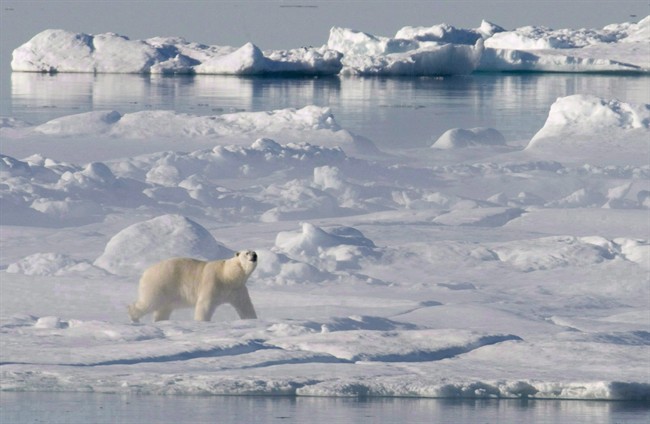TORONTO – The Arctic sea ice is heading toward its annual minimum, and while it shouldn’t break any new records, it still shows a rapid decline in the ice shield covering the north.

On Aug. 21, the extent of Arctic ice was 5.83 million square kilometres.
“Even if this year ends up being the sixth- or seventh-lowest extent, what matters is that the 10 lowest extents recorded have happened during the last 10 years,” said Walt Meier, a glaciologist with NASA’s Goddard Space Flight Center in Greenbelt, Md. “The long-term trend is strongly downward.”
Two University of Alaska Fairbanks (UAF) researchers have also found that the decline in sea ice and the warming trends are changing the vegetation in some Arctic coastal areas.
The research, based on 10 years worth of data, found that, among the change in terrestrial food change, sea-ice algae is disappearing and altering the marine food web. Larger plankton is growing, replacing smaller, more nutrient dense plankton.
Scientists are still trying to determine the consequences of the change.
Video: Downward trend of melting ice from 1979-2010
It’s not unusual for the Arctic ice to melt. Each summer it melts until about mid-September. The concern scientists have is with the annual average as well as the speed at which it is melting.

Get daily National news
Sea ice keeps polar regions cool. The ice is helps to moderate our climate by reflecting sunlight back into space. When the sea ice melts, it exposes the dark ocean surface which absorbs the sunlight, heating up the ocean and melting the ice even more.
The loss of Arctic sea ice has serious ecological affects. A lack of sea ice puts a stress on the natural environment, forcing animals to hunt in areas that they may have not hunted before. This causes unbalance in the environment. Polar bears are forced to swim farther and longer; Arctic foxes are left stranded on shore with land predators instead of being able to use the ice to migrate; caribou fall through the thinner ice during their annual migration.
Read: Shipping through the Northwest Passage – sooner than you think
The melting sea ice also affects the Inuit and other Aboriginal Peoples who go out on the ice to hunt for seal and fish.
NASA and other satellites continue to monitor the annual Arctic ice melt, using it as an indicator of climate change.
On Sept. 16, 2012, Arctic sea ice reached the lowest extent in recorded history at 3.41 million square kilometres. That is about half of the average that was recorded from 1979 to 2010.
In July, the Arctic experienced a very quick melt, but weather patterns kept the area cooler than normal, thus halting the rapid melt.
Conversely, the Antarctic will likely see the largest extent on record, having reached 19.3 million square kilometres. Scientists continue to study why there are often differences from one pole to the other.
Arctic sea ice continues to decline rapidly.


Comments